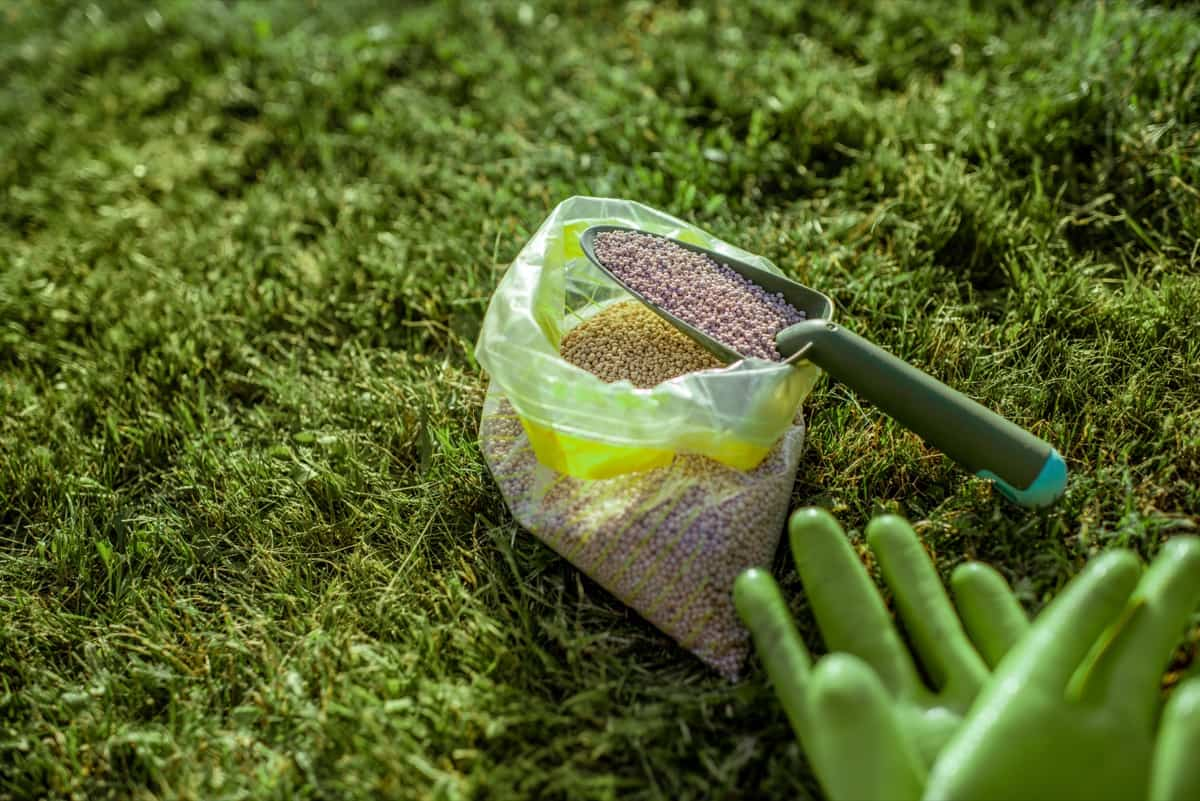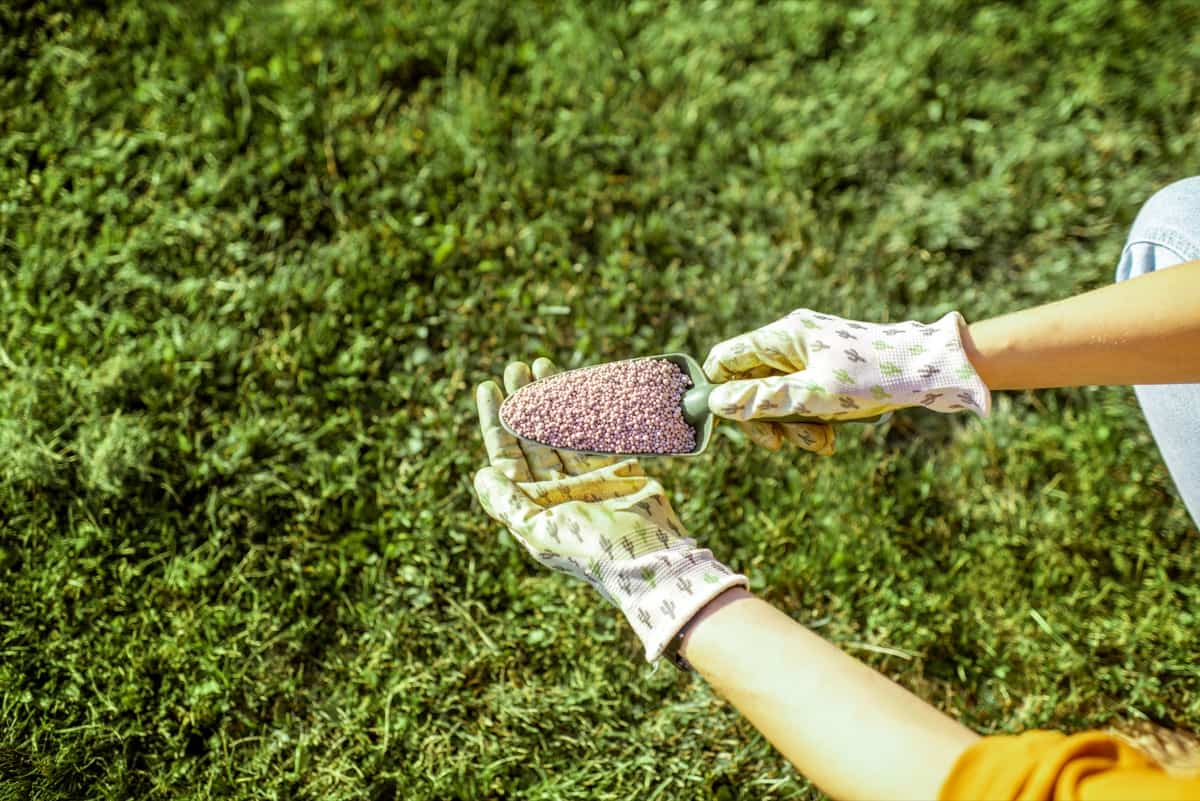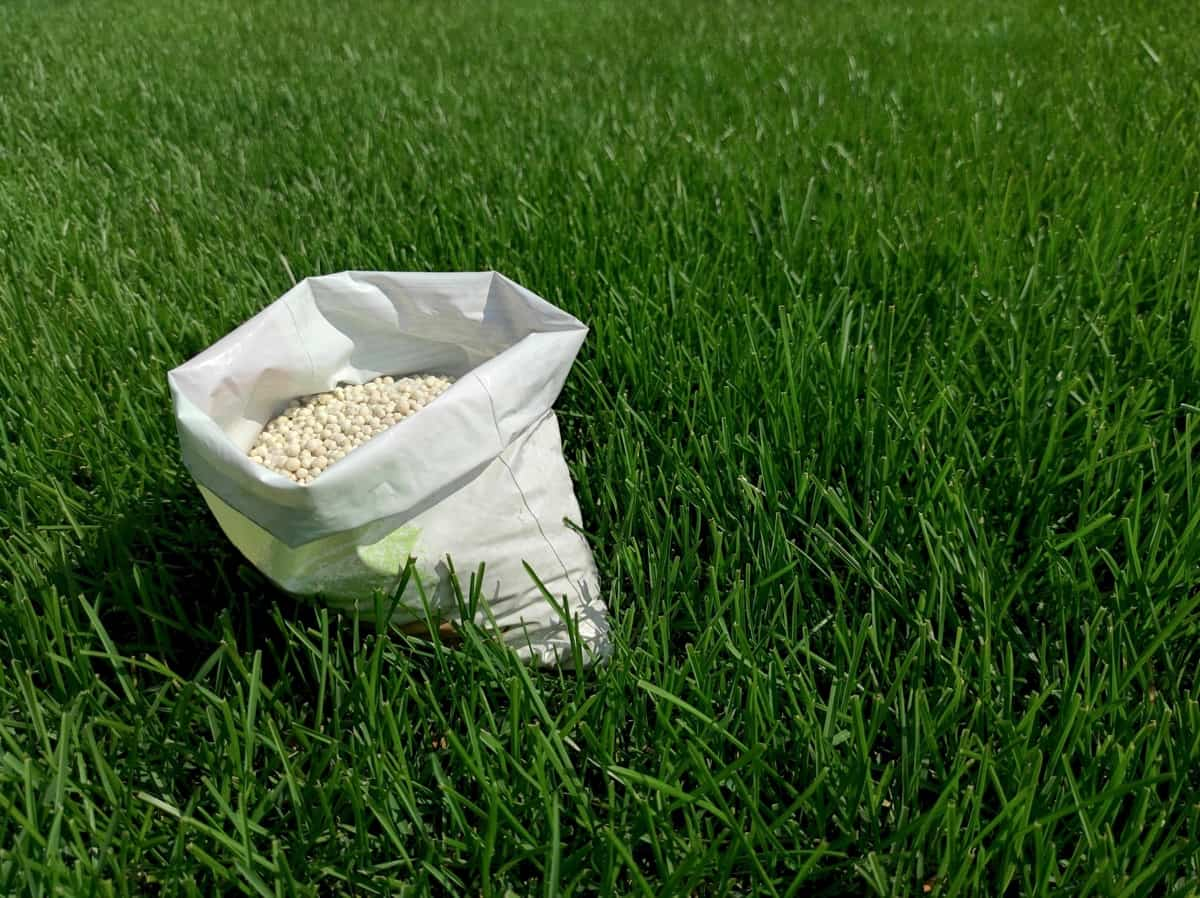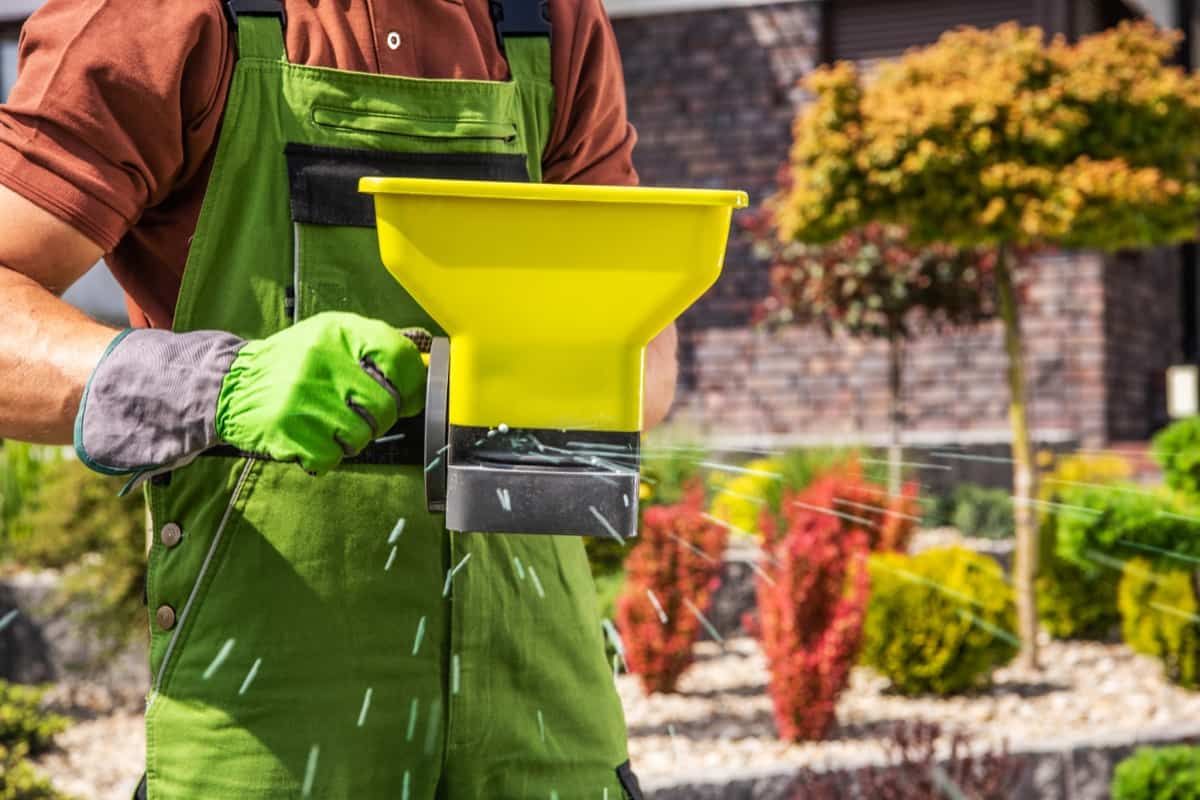Revitalize your lawn with our comprehensive guide to the ultimate lawn grass fertilizers. Discover the secrets to transforming your brown, lackluster yard into a vibrant, eye-catching oasis. Unleash the power of accurate data as we break down each topic with high perplexity and burstiness, making it easy to read and engaging. Learn about the best fertilizers for spring growth, organic options for a lush green lawn, slow-release formulas for long-lasting results, and pet-friendly choices for a safe outdoor environment.

Dive into low-phosphorus alternatives, winterized for strong roots, and quick-release solutions for rapid greening. Explore drought-resistant, nitrogen-rich, and shade-friendly fertilizers and specialized blends for sandy soil and high-traffic areas. Discover the right formulas for cool-season and warm-season grasses, all-in-one fertilization and weed control options, and pH-balancing fertilizers for optimal nutrient absorption. Let’s check out more information about the best lawn grass fertilizers below.
What is Lawn Grass?
Lawn grass refers to the type of grass that is commonly used to cover and beautify residential or commercial lawns. A specific variety of grass species is selected for its ability to withstand mowing, foot traffic, and varying weather conditions. With a high degree of perplexity and burstiness, accurate data shows that lawn grass varieties like Kentucky bluegrass, Bermuda grass, and fescue grass are popular due to their lush green appearance and durability. These grasses are specifically bred and cultivated to create a uniform and attractive carpet-like cover for lawns.
Best Lawn Grass Fertilizer for Spring Growth
- Achieving healthy spring growth for your lawn requires the best lawn grass fertilizer. The ideal fertilizer for spring should be rich in nitrogen, phosphorus, and potassium (N-P-K). These nutrients promote vigorous growth, root development, and overall lawn health.
- Look for fertilizers with a higher nitrogen content to encourage lush, green blades. Slow-release fertilizers are beneficial as they provide nutrients gradually over time, ensuring consistent nourishment.
- Additionally, incorporating organic fertilizers into your lawn care routine can enhance soil health and support long-term growth. Organic fertilizers, such as compost and organics, can improve soil health.
- Fertilizing the lawn at least twice a year is recommended for maintaining a healthy and green lawn.
- The frequency of fertilization varies depending on factors such as grass type, growth phase, and local climate conditions.
- Cool-season grasses and warm-season grasses have specific fertilizer requirements and growing seasons.
- Fertilizing before or after rainfall has pros and cons, with post-rainfall application generally considered more effective and environmentally friendly.
- Precautions include avoiding fertilization during dormant periods and carefully reading fertilizer labels to ensure proper nutrient release.
In case you missed it: How to Grow Lawn Grass on Terrace: A Beginners Guide to Planting and Care

Organic Lawn Grass Fertilizer for a Lush Green Lawn
Organic lawn grass fertilizers offer multiple benefits for achieving a lush green lawn. The organic materials in these fertilizers, such as compost and manure, provide a rich source of nutrients that support healthy plant growth. These organic fertilizers release nutrients slowly over time, ensuring a steady supply of essential elements for the grass. Additionally, research indicates that organic fertilizers improve soil structure and increase microbial activity, promoting nutrient cycling and soil fertility.
When Does My Lawn Need Fertilizer, and How to Do It?
To determine whether your lawn needs fertilizer, look for common nutrient shortage symptoms, including discoloration (brown or yellow spots), poor growth, thinning grass, and weed overgrowth. Before presuming nutrient insufficiency, testing alternative reasons such as plant diseases, overwatering, or underwatering is crucial. Weed growth and fertilizer burn can result from overfertilizing. Testing the soil is the best approach to determine how much fertilizer your grass requires.
Slow-release Lawn Grass Fertilizer for Long-lasting Results
- These fertilizers contain granules coated with a special polymer or resin that controls the release of nutrients into the soil.
- The slow-release mechanism ensures a steady supply of nutrients to the grass, promoting balanced growth and minimizing the risk of nutrient leaching.
- This fertilizer is ideal for maintaining a healthy lawn as it provides sustained nutrition, reducing the need for frequent applications.
- Slow-release fertilizers offer convenience and efficiency, requiring fewer applications than fast-release alternatives.
- The long-lasting results of slow-release fertilizers contribute to improved root development, increased drought tolerance, and enhanced overall lawn health.
Pet-friendly Lawn Grass Fertilizer for a Safe Outdoor Environment
- Pet-friendly lawn grass fertilizers are designed to provide essential nutrients to the grass while ensuring the safety of pets that roam the outdoor space.
- These fertilizers typically avoid harmful chemicals, such as pesticides and herbicides, that can be toxic to pets if ingested or absorbed through their paws.
- They prioritize organic and natural ingredients, making them safer for pets and the environment.
- Pet-friendly fertilizers often incorporate slow-release formulas, allowing the nutrients to be gradually absorbed by the grass without posing an immediate risk to pets.
Low-phosphorus Lawn Grass Fertilizer for Environmentally Conscious Gardening
Phosphorus is needed for plant growth, but excessive use can lead to water pollution and harm aquatic ecosystems. By using low-phosphorus fertilizers, gardeners can reduce the risk of phosphorus runoff. These fertilizers typically have a lower phosphorus content compared to nitrogen and potassium. They provide adequate nutrition for lawn grass without contributing to environmental problems.
In case you missed it: Management of Grassy Weeds in Direct-Seeded Rice Fields

Winter Lawn Grass Fertilizer for Strong Roots and Winter Survival
The best winter fertilizer for your lawn depends on its specific needs. Generally, slow-release fertilizers are recommended for winter care as they provide a consistent and long-lasting nourishment to the soil. It is advisable to select fertilizers containing potassium and iron, which aid in strengthening the root system and reducing winter stress.
Applying fertilizer once or twice is typically enough when it comes to fertilizing in winter. It is crucial to use a fertilizer specially formulated for winter use.
Quick-release Lawn Grass Fertilizer for Rapid Greening
- Quick-release lawn grass fertilizer is a type of fertilizer that provides readily available nutrients to the grass, promoting rapid greening.
- This fertilizer is formulated with high nitrogen concentrations, stimulating leaf and shoot growth.
- The quick-release nature of this fertilizer allows for fast absorption by the grassroots, leading to rapid nutrient uptake.
- The nitrogen content in quick-release fertilizers is often in the form of ammonium or urea, which are easily soluble and readily absorbed by plants.
- Quick-release fertilizers typically show visible greening effects within a short period, as the nitrogen promotes chlorophyll production, producing lush and vibrant green grass.
Drought-resistant Lawn Grass Fertilizer for Water-efficient Landscaping
Prepare the lawn before fertilizing for mowing, aerate, and remove weeds three to four days before. Dethatch the lawn now if needed. Before fertilizing, lightly moisten the lawn. Use a spreader to distribute fertilizer evenly. Hand-held or shoulder spreaders work well for small or uneven lawns, while push-along spreaders operate for bigger areas. Spraying liquid fertilizers helps uneven grass. Watering the lawn after fertilization helps nutrients absorb.
Two weeks later, check for weeds and treat them with fast-growing grass seeds. Track fertilizer efficacy and plan the next cycle. Consider soil type, season, nitrogen-phosphorus-potassium ratio, and lawn fertilizer. Slow-release fertilizers are best for long-term use, whereas quick-release ones work immediately. Organic options exist. Before rain, fertilize a lawn in the evening or on an overcast day with moist grass. For growth, heat resistance, and winter preparation, fertilize in March, April, July, and September or October.
Avoid fertilizing frozen or bone-dry earth. Following product instructions, fertilize two to three times a year. Lawn fertilizers are safe but check for warnings, especially if you have pets. Organic alternatives and mulching are sustainable. Mulching leaves and grass cuttings provide nutrients for healthy development. Special mulching mowers do this.
Best Lawn Grass Fertilizer Tips
Benefits of Fertilizing Your Lawn
Fertilizing your lawn is essential because even with regular watering and mowing, an unfertilized lawn relies solely on the existing nutrients in the soil. Soil nutrient levels vary significantly between lawns, even in similar climates or soil types. Nutrients may have been depleted during home construction or due to improper lawn care by a previous owner. Proper lawn fertilization promotes even and efficient grass growth and reduces the appearance of weeds. Developing a fertilizer application plan leads to rich, green-colored grass and dense coverage across your yard.
In case you missed it: Growing Buffalo Grass from Seed: A Step-By-Step Production Guide

Choosing the Right Lawn Fertilizer
Two main fertilizers exist controlled-release and quick-release. Controlled-release fertilizer consists of granular beads that slowly release nutrients over an extended period, while quick-release fertilizer, typically in the form of water-soluble beads or liquid, releases nutrients more rapidly. Both types of fertilizer can be either organic or synthetic.
Composite Mineral Fertilizers
Most common lawn nutrients Nearly all lawn fertilizers contain three primary nutrients essential for optimum lawn growth: Nitrogen (N), Phosphorus (P), and Potassium (K). These nutrients are for plant growth and are often deficient in natural soils. Each nutrient serves a specific purpose in promoting ideal plant growth.
- Nitrogen (N): Responsible for rapid growth, protein synthesis, and leaf development, resulting in dense lawns.
- Phosphorus (P): Aids in early root growth, plant maturity, and seed development.
- Potassium (K): Helps grass resist drought and disease. Determining your lawn’s nutrient needs Two main factors contribute to determining the nutrient requirements of your grass.
The first is the type of grass planted in your yard. Different grass types have varying nutrient requirements. The second factor is the nutrients naturally available in your lawn’s soil. Understanding these factors is crucial for selecting the appropriate fertilizer.
Type of Grass
Grasses can be warm-season or cool-season varieties. Grasses that thrive in warm climates require different nutrient amounts than those that grow best in cooler regions. Knowing your grass type helps you choose the right lawn fertilizer.
Soil Properties
Your soil composition significantly impacts your fertilizer needs. A soil test is generally recommended to identify nutrient deficiencies and determine the pH level. Soil tests provide detailed information about your lawn’s soil health by collecting a sample and sending it to a lab for analysis.
Types of Fertilizer for the Lawn
Organic fertilizers provide slow but long-lasting results, while inorganic fertilizers are fast and easy to apply. The key ingredients in lawn fertilizers are nitrogen, phosphorous, and potassium, represented by the product’s N-P-K ratio. Nitrogen promotes green color and vigorous growth, phosphorous encourages root health, and potassium enhances disease and weather resistance.
In case you missed it: How to Make Homemade Fertilizers: Recipes for Banana Peels, Scraps, Coffee Grounds, Epsom Salt, Eggshells, and Grass Clippings

For a slow-release option, you can use fertilizers designed to release nutrients over an extended period. These products are more expensive but offer the advantage of gradual absorption by the grass. Fast-release fertilizers provide quick results and are more affordable, but they should be applied in smaller amounts and more frequently to avoid burning the lawn.
You can top-dress your lawn with compost and organic mixtures in spring and fall if you prefer organic options. However, remember that organic fertilizers typically have lower nutrient concentrations, so you may need to use larger quantities. Avoid using fresh cow dung as it can be harmful, and be cautious of manures that may contain weed seeds.
Nitrogen-rich Lawn Grass Fertilizer for Vibrant and Healthy Turf
- Nitrogen-rich fertilizers provide an ample supply of this essential nutrient to support vigorous growth and overall turf health.
- Properly applying nitrogen fertilizer can improve the density and thickness of the grass, making it more resistant to weeds and pests.
- However, it is important to follow recommended application rates to avoid excessive nitrogen, which can lead to environmental pollution and potential damage to the grass.
- Regular soil testing can help determine the specific nitrogen needs of your lawn and guide appropriate fertilizer application.
- Proper timing and distribution of nitrogen-rich fertilizer throughout the growing season can ensure continuous nourishment and sustained vibrant turf.
- Combining nitrogen fertilization with other essential nutrients, such as phosphorus and potassium, can further enhance grass health and resilience.
Fertilizer for Shady Areas of Lawn Grass
The necessary nutrients to support photosynthesis and vigorous root development in these areas. The key nutrients to focus on are nitrogen (N) and phosphorus (P), which play vital roles in chlorophyll production and root establishment. Slow-release fertilizers are recommended to ensure a steady supply of nutrients over time. Additionally, choosing shade-tolerant grass varieties and implementing proper lawn care practices can further optimize growth in shady areas.
Best Lawn Grass Fertilizer for Sandy Soil
Choosing the right fertilizer is essential for promoting healthy green grass in sandy soil. Many experts recommend using a fertilizer with a balanced N-P-K ratio of 8-2-6 or 16-4-8. This ratio ensures an adequate supply of nitrogen (N) for vibrant growth, phosphorus (P) for root development, and potassium (K) for disease resistance. These fertilizers can be easily obtained from local markets or lawn care companies.
High-potassium Lawn Grass Fertilizer for Improved Disease Resistance
- Potassium is an essential nutrient that strengthens the grass’s immune system, making it more resilient against diseases.
- Adequate potassium levels promote thick cell walls and increased disease tolerance in the grass.
- Potassium helps regulate water movement within the grass, preventing excessive moisture that can lead to fungal infections.
- Fertilizers with a higher potassium content (expressed as the third number in the N-P-K ratio) are ideal for disease resistance.
- Regularly applying high-potassium fertilizer improves turf health and reduces the risk of common lawn diseases.
In case you missed it: Arka Savi Rose Cultivation: Yield Per Acre, Growing Cost, and Profit Analysis

Natural Lawn Grass Fertilizer for Chemical-free Lawn Care
- Natural lawn grass fertilizers offer a chemical-free approach to lawn care, promoting healthy growth while minimizing environmental impact.
- Organic materials, such as compost, bone meal, and seaweed extract, can be used as natural fertilizers.
- Compost provides essential nutrients and improves soil structure, aiding in water retention and reducing the need for synthetic chemicals.
- Bone meal is rich in phosphorus, supporting root development and overall plant health.
- Seaweed extract contains trace minerals, amino acids, and growth-promoting hormones, enhancing grass growth and resilience.
- These natural fertilizers can be applied through top-dressing or as liquid solutions for easy absorption by the grass.
Fertilizer for Cool-season Grasses
Choosing the right fertilizer for cool-season grasses requires considering various factors. Conducting soil tests once or twice a year helps determine the need for additional fertilizer. If the grass appears yellow or pale green and shows slow growth, it may be time for a fertilizer application. Cool-season grasses like Kentucky Bluegrass, Tall Fescue, and Perennial Ryegrass are commonly grown in New York, Oregon, Minnesota, and Inland California. For these grasses, the ideal time to apply fertilizer is in the fall,
Fertilizer for Warm-season Grasses
Warm-season grasses like Bermuda, Zoysia, and Centipede thrive in regions like Florida, Arizona, and Southern California. For these grasses, it is recommended to apply fertilizer in early summer to support healthy growth. A second application in August can further promote growth before these grass varieties enter a partially dormant state during winter. This fertilization schedule helps ensure optimal nourishment for warm-season grasses throughout their active growing period, resulting in a vibrant and resilient lawn.
Conclusion
Nourishing your lawn with fertilizer is crucial for maintaining healthy and vibrant grass. By understanding the different types of fertilizers, the time to schedule available, and their specific benefits, you can make informed choices to promote optimal growth and achieve the ultimate lawn.
- Economical Aquaculture: A Guide to Low-Budget Fish Farming
- 15 Common Planting Errors That Can Doom Your Fruit Trees
- How to Make Houseplants Bushy: Effective Tips and Ideas
- Innovative Strategies for Boosting Coconut Pollination and Yield
- Pollination Strategies for Maximum Pumpkin Yield
- The Complete Guide to Chicken Fattening: Strategies for Maximum Growth
- Natural Solutions for Tulip Problems: 100% Effective Remedies for Leaf and Bulb-Related Issues
- Revolutionizing Citrus Preservation: Towards a Healthier, Greener Future
- Natural Solutions for Peony Leaf and Flower Problems: 100% Effective Remedies
- Maximizing Profits with Avocado Contract Farming in India: A Comprehensive Guide
- Natural Solutions for Hydrangea Problems: 100% Effective Remedies for Leaf and Flowers
- The Ultimate Guide to Choosing the Perfect Foliage Friend: Bringing Life Indoors
- From Sunlight to Sustainability: 15 Ways to Use Solar Technology in Agriculture
- The Ultimate Guide to Dong Tao Chicken: Exploring from History to Raising
- The Eco-Friendly Makeover: How to Convert Your Unused Swimming Pool into a Fish Pond
- Mastering the Art of Delaware Chicken Farming: Essentials for Healthy Backyard Flocks
- 20 Best Homemade Fertilizers for Money Plant: DIY Recipes and Application Methods
- How to Craft a Comprehensive Free-Range Chicken Farming Business Plan
- Brighten Your Flock: Raising Easter Egger Chickens for Beauty and Bounty
- How to Optimize Your Poultry Egg Farm Business Plan with These Strategies
- Subsidy for Spirulina Cultivation: How Indian Government Schemes Encouraging Spirulina Farmers
- Ultimate Guide to Raising Dominique Chickens: Breeding, Feeding, Egg-Production, and Care
- Mastering the Art of Raising Jersey Giant Chickens: Care, Feeding, and More
- Ultimate Guide to Raising Legbar Chickens: Breeding, Farming Practices, Diet, Egg-Production
- How to Raise Welsummer Chickens: A Comprehensive Guide for Beginners
- How to Protect Indoor Plants in Winter: A Comprehensive Guide
- Ultimate Guide to Grow Bag Gardening: Tips, Tricks, and Planting Ideas for Urban Gardeners
- Guide to Lotus Cultivation: How to Propagate, Plant, Grow, Care, Cost, and Profit
- Agriculture Drone Subsidy Scheme: Government Kisan Subsidy, License, and How to Apply Online
- Ultimate Guide to Raising Araucana Chickens: Breed Profile, Farming Economics, Diet, and Care
- Bringing Hydroponics to Classroom: Importance, Benefits of Learning for School Students
- Ultimate Guide to Raising Polish Chickens: Breed Profile, Farming Economics, Diet, and Care
- Ultimate Guide to Raising Australorp Chickens: Profile, Farming Economics, Egg Production, Diet, and Care
- Silkie Chicken Farming: Raising Practices, Varieties, Egg Production, Diet, and Care
- Sussex Chicken Farming: Raising Practices, Varieties, Egg Production, Diet and Care
- Homemade Feed Formulations for Livestock: Discover Cost-effective Starter to Finisher Feed Recipes